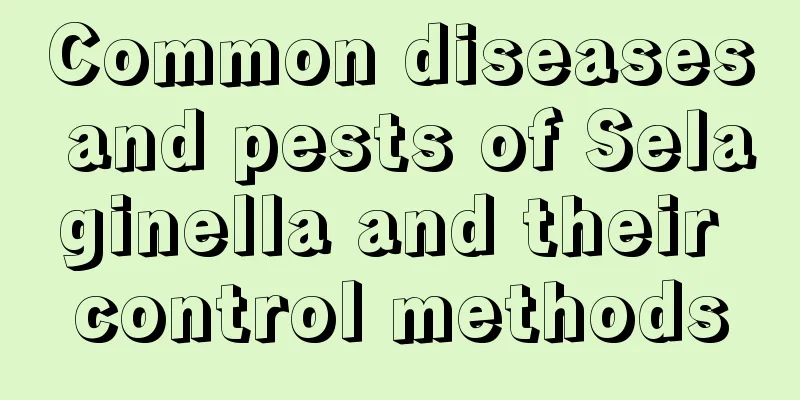Common diseases and pests of Selaginella and their control methods

Selaginella diseasesLeaf spotLeaf spot disease often occurs during the rainy season, and is generally more likely to occur in humid weather because humid weather makes it easier for the bacteria to multiply. When the disease first occurs, it appears as small brown spots. The edges of the leaf spots become water-soaked and faded, and expand outward in a ring-like pattern. In the later stage, dark brown mold spots will appear in the center of the lesions, and under humid conditions, they will turn into a dark brown mold layer.Leaf spot disease prevention and control methodsRemove diseased leaves promptly and spray with 100 times diluted carbendazim during the disease period.anthraxAnthracnose initially occurs on the leaves and in severe cases spreads to the petioles. In the early stage, the lesions appear as small water-soaked yellow spots, which gradually spread into a ring-like shape. In the later stage, the lesions become connected into one, causing the leaves to dry up, and small black spots arranged in a ring pattern will appear.Anthracnose control methodsStrengthen maintenance and increase the application of phosphorus and potassium fertilizers to enhance plant resistance; in the early stage of the disease, you can spray with 1000 times diluted equal-volume Bordeaux mixture or 1500 times diluted thiophanate-methyl solution.Selaginella pestsBrown Soft ScaleBrown soft scale can harm many kinds of plants and is more common on Selaginella. Brown soft scale generally gathers on leaf surfaces or young leaves, sucking plant sap through piercing-sucking mouthparts, which can easily induce sooty mold disease, affect the plant's photosynthesis, and ultimately cause weak growth and yellowing leaves.Brown Soft Scale Control MethodsWhen there are not many insects, you can use a brush or bamboo stick to scrape off the insect bodies; during the nymph hatching period, you can spray with 100-fold diluted malathion emulsifiable concentrate or oxydemeton-methyl emulsifiable concentrate. |
<<: Common diseases and pests of sedge and their control methods
>>: Diseases and their control of Limonium
Recommend
What to do if grape hyacinth is infested with insects
1. Whitefly Whiteflies can harm the new shoots, l...
Do I need to water the camellia after transplanting it? How long does it take for the camellia to survive after transplanting it?
1. Do you need to water the plants after transpla...
The growing environment and local conditions of apricot trees
Apricot Tree Growth Environment and Conditions Th...
How to identify Feicai
1. Leaves The leaves of the plant are alternate, ...
Does germination rate of succulent leaf cuttings in winter increase?
The variety also determines the germination rate ...
How to water spoon lip orchid
1. About the proportion and frequency of watering...
How to manage water lilies in winter?
As the weather turns colder, many plants begin to...
The efficacy and function of spinach
The efficacy and function of spinach Dietary valu...
Can washing vegetable water be used to water flowers? The correct way to water flowers
Can I use vegetable washing water to water the fl...
The four seasons change, and the succulents are very different in season
Spring (March to May) During the year, most succu...
Celery Refrigerator Germination Method Celery Germination Temperature and How Many Days
Celery Seed Germination Conditions The biggest pr...
What is the best month to plant fast food?
When are fast vegetables planted? The growth cycl...
What does rosemary do?
1. Helps you sleep Rosemary flowers and seeds can...
Does leek like water or drought?
Do leeks prefer moisture or drought? Newly plante...
How to deal with Oncidium after flowering and how to prune it
1. How to deal with Oncidium after it blooms 1. P...









